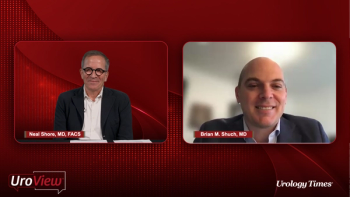
Current Shortcomings in the Modern Urology Practice Management Landscape
A urologist practicing in California defines the remaining general and region-specific challenges he faces in managing his practice and his hopes for future solutions.
Episodes in this series

John J. Kowalczyk, DO, FACOS: There are unmet challenges in terms of management of urology, especially in California. I have to specify California because our HMO [health maintenance organization] system is unique compared with other parts of the country because we have independent physician associations [IPAs]. There are 3 things that I see as major challenges. The first 1 is the authorization process. I don’t mean prior authorization for medication. That’s still a pain in a certain part of the anatomy that all physicians and providers are dealing with. If there was an easier, faster, softer way to do that, then that would be great.
Our challenge is that we’re contracted. Let me give you an example. BlueShield HMO subcontracts with independent physician associations. Within our urban area, there are at least 20 other subgroups, called independent physician organizations, that have this BlueShield or even BlueCross HMO product. That being said, we can’t go to BlueCross BlueShield to request authorization for surgery because these are independent organizations that have their own processes. We have to go through them. They are the bypass for major corporations. We have to go to every 1 of these corporations. That means we have 20 different websites we have to go to on a regular basis to get authorization to do a procedure. Sometimes, that procedure is in the office.
If there was a way to integrate, link, or connect whatever process to make it easier, especially if it’s already preloaded into that patient, then that would be great. You get into that patient’s record and then, all of a sudden, there’s a link to their specific IPA. That way, you can have both screens open at the same time and process the paperwork. Right now, we have computers, for our authorization people, which they can use to log in to our system. Then they have to log into every independent physician association to get a request. Let’s say they have to request a cystourethroscopy CPT [Current Procedural Terminology code] 52000. You’d have to do that. If I saw 20 patients this morning¾that would be a slow day, by the way¾and each needed a cystoscopy, and each came from a different IPA, then my authorization person would have to log in to 20 different IPAs to request the CPT 52000 on their next visit.
The second thing I see as a challenge is that we still unfortunately use a paper system when we see our patients in the hospital. We’re getting a physical copy of patient demographics from the hospital. I’m mainly talking about someone who’s not an existing patient in our practice. We then have to have our billing and coding company submitted as an outside location or have our internal people create a document, which is time consuming. Then we submit the codes to the billing and coding service. You see, there are multiple steps which create multiple backlogs, which delays or decreases the speed of recovery for compensation.
The last challenge is trying to make it easier for non-English-speaking patients to access our communication in the portal system. It would be best if there was a way to integrate language. For example, our students will go in and take Google Translate into the room with them when they’re asking patients questions in their native tongue. Whether it’s Spanish or Armenian or Russian or Mandarin, they go in and communicate with the patient in that fashion. I wish there was a way for our patients to be able to communicate with us in a universal capacity.
These are my top 3 challenges. The first is the ability to better utilize our billing and coding systems. All of it comes back to billing and coding. Second, it minimizes the amount of time spent to complete authorizations for our hospital patients. We did a creative workaround for existing patients in which we’re able to create sites of visit. That’s a workaround, so it’s not ideal. The important thing is that it will persuade people in the computer engineering world to come up with a better mousetrap, if you want to call it that.
Newsletter
Stay current with the latest urology news and practice-changing insights — sign up now for the essential updates every urologist needs.
















